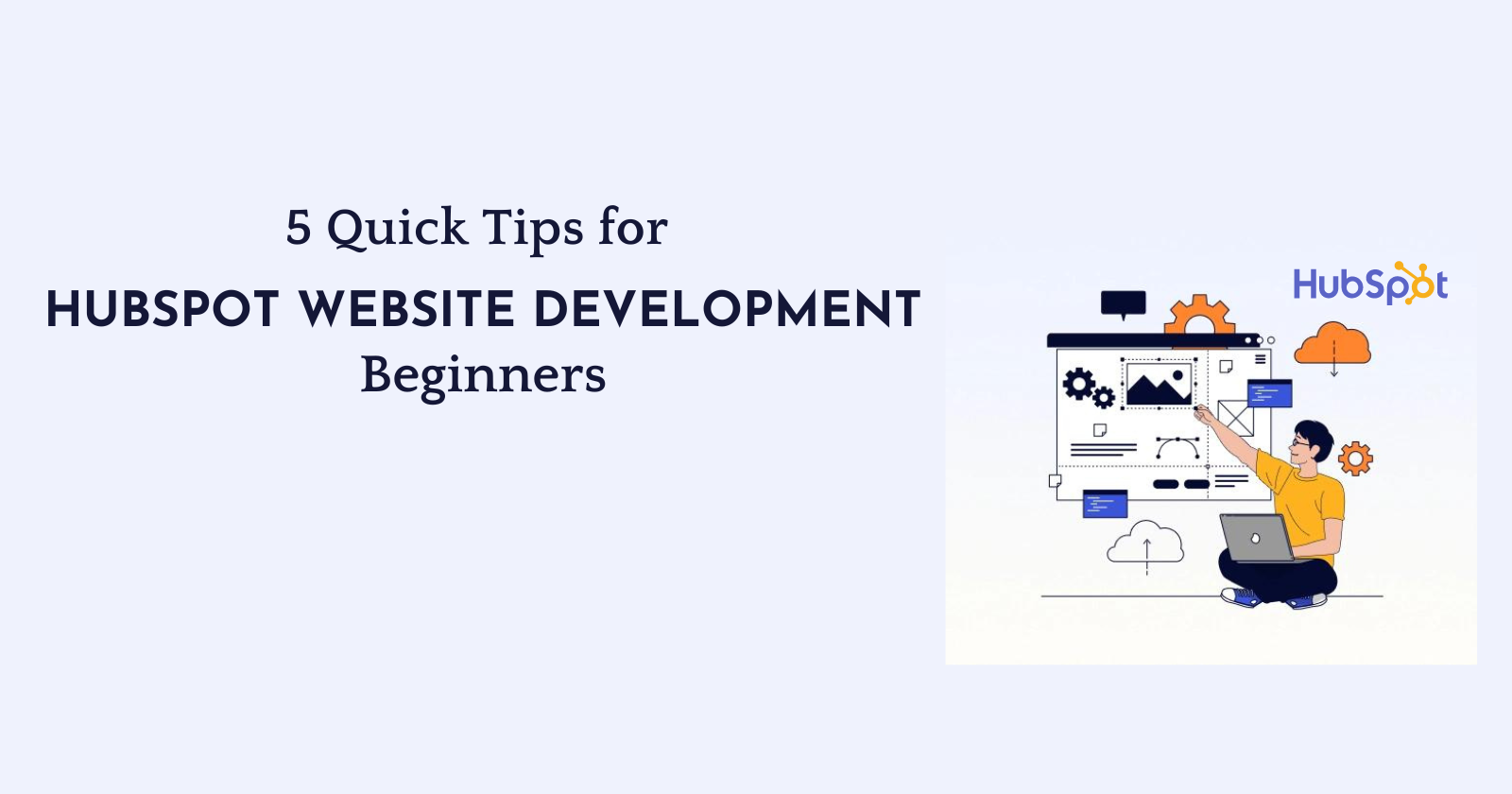5 Quick Tips for Hubspot Website Development Beginners
 Techno Softwares
Techno Softwares
Introduction
HubSpot is a powerful platform that combines marketing, sales, and customer service tools to help businesses grow. For website development, HubSpot offers a Content Management System (CMS) that is user-friendly and versatile. If you're new to HubSpot website development, it can be overwhelming to figure out where to start. Here are five quick tips to help beginners get the most out of HubSpot for website development.
Tip 1: Understand the Basics of HubSpot CMS
Before diving into development, it’s crucial to understand the basics of Hubspot CRM Development Services. The platform is designed to be intuitive, but having a solid grasp of its core components will make your development process smoother.
Key Components:
Templates: Templates are the foundation of your website. HubSpot provides a variety of pre-designed templates, but you can also create custom ones to fit your specific needs. Templates control the layout and structure of your web pages.
Modules: These are reusable blocks that you can add to your templates. Modules can be anything from text blocks to forms, images, or custom-coded elements. HubSpot’s drag-and-drop Hubspot Developers makes it easy to add and arrange modules on your pages.
Themes: Themes bundle together templates, modules, and style settings, providing a cohesive design for your site. HubSpot’s marketplace offers many free and paid themes to get you started.
Global Content: This includes elements like headers, footers, and navigation menus that appear across multiple pages of your site. Setting up global content ensures consistency throughout your website.
Content Staging: HubSpot Development allows you to create and test pages in a staging environment before publishing them live. This is particularly useful for making sure everything looks and functions correctly.
Tip 2: Leverage HubSpot’s Drag-and-Drop Editor
One of the best features of HubSpot CMS Developer is its drag-and-drop editor, which makes it easy for beginners to design and build web pages without needing extensive coding knowledge.
Benefits of the Drag-and-Drop Editor:
Ease of Use: The editor’s intuitive interface allows you to add, move, and edit modules with a few clicks.
Flexibility: You can create complex layouts by simply dragging and dropping elements into place.
Speed: Quickly build and modify pages, making it easier to keep your website up-to-date.
Tips for Using the Drag-and-Drop Editor:
Start with Pre-Built Templates: Use HubSpot’s pre-built templates as a starting point. Adjust them to suit your brand’s style.
Experiment with Modules: Familiarize yourself with different modules available in HubSpot. Try adding text blocks, images, forms, and CTAs to see how they work.
Use Columns and Rows: Organize your content using columns and rows to create structured layouts. This keeps your site looking clean and professional.
Preview and Test: Always preview your changes and test them across different devices and browsers to ensure compatibility and responsiveness in your HubSpot COS Development.
Tip 3: Focus on SEO from the Beginning
Search engine optimization (SEO) is essential for attracting visitors to your website.HubSpot CMS includes built-in SEO tools that can help you optimize your site for search engines.
SEO Best Practices:
Keyword Research: Find relevant keywords for your business and include them in your content.Tools like HubSpot’s SEO recommendations can help you find the right keywords.
Optimize Page Titles and Meta Descriptions: Write clear and compelling page titles and meta descriptions that include your target keywords.
Use Header Tags: Structure your content with header tags (H1, H2, H3, etc.).This not only helps with SEO but also improves the readability of your pages.
Internal Linking: Link to other pages on your site to help search engines understand the structure and hierarchy of your content. This also keeps visitors engaged by providing easy navigation.
Image Optimization: Use descriptive file names and alt text for images to improve your site's accessibility and SEO.
Tip 4: Utilize HubSpot’s Built-In Analytics
Tracking your website’s performance is essential for understanding what’s working and what needs improvement. Hubspot Development Services offer powerful analytics tools that provide insights into your website traffic, user behavior, and conversion rates.
Key Analytics Metrics to Monitor:
Traffic Sources: Understand where your visitors are coming from (e.g., organic search, social media, direct traffic).
Page Performance: Analyze which pages are getting the most views and engagement. Identify high-performing content and areas that need optimization.
Conversion Rates: Track how well your site converts visitors into leads or customers. Look at form submissions, CTA clicks, and other conversion actions.
Bounce Rate: Check how many visitors leave your site after viewing just one page. A high rate might mean problems with your content or user experience.
User Behavior: Use heatmaps and session recordings to see how visitors interact with your site. This can provide valuable insights into user behavior and help you improve your site’s usability.
Tip 5: Take Advantage of HubSpot Academy and Community Resources
HubSpot offers a wealth of educational resources to help you become proficient in website development. The HubSpot Academy and community forums are excellent places to start.
HubSpot Academy:
Courses and Certifications: Hubspot Development Company in the USA offers free courses and certifications on various topics, including website development, SEO, and inbound marketing. These courses are designed to help you gain practical skills and knowledge.
Tutorials and Webinars: Access step-by-step tutorials and webinars to learn about specific features and best practices.
Community Resources:
HubSpot Community Forum: Join the HubSpot community forum to ask questions, share experiences, and get advice from other HubSpot users and experts.
User Groups: Participate in local Hire Hubspot Developers groups (HUGs) to network with other users in your area, attend meetups, and learn from industry professionals.
Support and Documentation: Utilize HubSpot’s extensive support documentation and knowledge base for troubleshooting and learning how to use different features.
Conclusion
Getting started with HubSpot Website Development can be a rewarding experience. By understanding the basics of HubSpot CMS, leveraging the drag-and-drop editor, focusing on SEO, utilizing built-in analytics, and taking advantage of educational resources, you can build a professional and effective website. Remember, practice makes perfect, so keep experimenting and learning as you go. Happy developing!
Subscribe to my newsletter
Read articles from Techno Softwares directly inside your inbox. Subscribe to the newsletter, and don't miss out.
Written by

Techno Softwares
Techno Softwares
At Techno Softwares, we offer expert HubSpot development services. Our team is dedicated to creating custom solutions to enhance your marketing, sales, and customer service on the HubSpot platform.